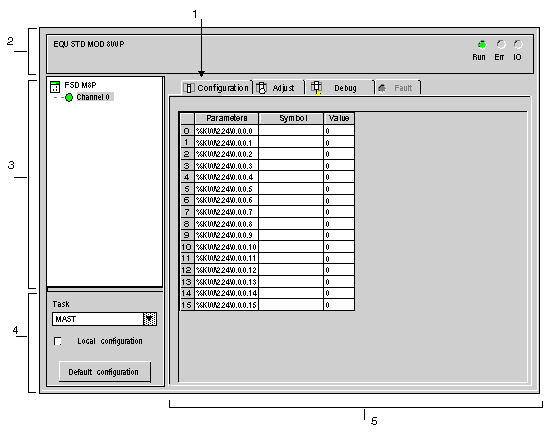|
Configuration Screen for a Standard Profile
|
|
|
(Original Document)
|

|
Number
|
Element
|
Function
|
|---|---|---|
|
1
|
Tabs
|
The tab in the foreground indicates the mode in progress (Configuration in this example). Every mode can be selected using the respective tab. The available modes are:
|
|
2
|
Module area
|
Gives a reminder of the device’s shortened name.
|
|
3
|
Channel area
|
Is used:
|
|
4
|
General parameters area
|
This area is used to define the task (MAST or FAST) in which the channel implicit exchange objects will be exchanged.
The Local configuration checkbox is only available for the profiles FSD C8 P and FSD M8 P.
If the box is checked, the configuration and adjustment parameters are not sent to the device connected to the bus. In this case, the device starts up or initializes itself using its own parameters.
If the box is checked in the configuration screen, the channel parameters cannot be accessed from the configuration area.
The Default configuration button is used to return to the initial configuration.
|
|
5
|
Configuration area
|
In cases where the standard profile of %KW configuration words or the %MW adjustment words exist, this area displays them.
A Symbol and a Value are associated to each word.
For each value the contextual menu can be used to select the display base for the value of the selected word.
Three types are available:
|